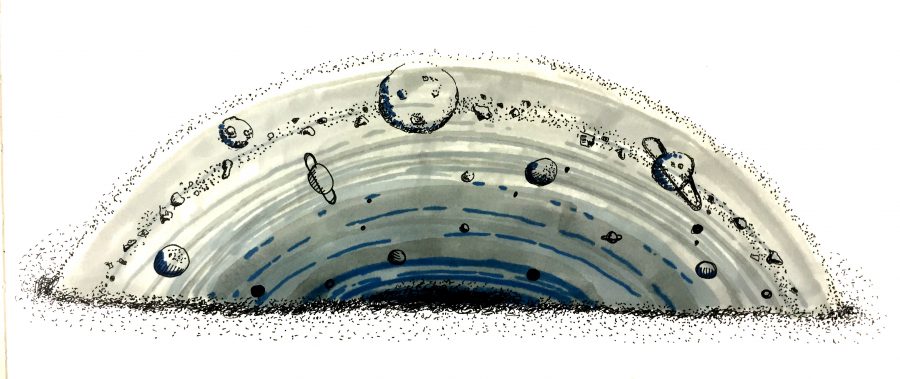I learned to find beauty in the violent stillness of the night sky from the catwalks of the McDonald Observatory.
For the first few minutes, the west Texas sky appears unimpressive as through the haze of a dense city like Austin. The sheer darkness is impressive, like swimming at the bottom of the deep end. But only after the first ten minutes do your pupils fully dilate, bringing into full focus a sky wet with stars.
Ursa Major, what looks like just seven stars arranged as a big dipper from inside the city, reveals itself as a thousand points of light. The Milky Way arches across the sky, the center of our host galaxy a brilliant but soft blanket of gas, dust and countless stars.
Standing still atop an ocean of darkness in west Texas, where street lamps and car headlights are few and far between, the slow pace of our Universe becomes overwhelmingly evident. The cascade of stars sits idle, each silently burning, and the gusty mountain winds are the only soundtrack to yourmidnight vista.
Occasionally, there is a flash. It is so dark that your eyes can see a bounty of meteors on their kamikaze trips through the Earth’s atmosphere. But there is a steadiness to the sky that belies its beauty.
It is easy to forget that we are standing atop a blue marble that is hurtling through space, rotating at more than 900 miles an hour. That rotation causes the stars to inch along in the night, offering a fresh face to the sky every few hours. But even the stars themselves never sit perfectly still. They roil at the surface from convection or are occasionally eclipsed, starlight momentarily blocked by an orbiting star or perhaps even an alien planet. These are the quirks in the light that allow astronomers vastly more information into stars so far away it takes light hundreds or thousands of years to reach our fair planet.
Through some perversely lucky twist of fate, I ended up spending more than 220 nights over four years in west Texas, training the 75-year-old, 2.1-meter Otto Struve telescope at the heavens. I was mostly looking at white dwarfs, the burnt-out cores of stars like our Sun, and I spent my nights watching the brightness of these dying stars change in far more detail than available to my small set of eyes.
So while I was inspired by the thrill of discovering new things about the Universe, using star-quakes to peer below the surface of these extremely dense objects or watching a rare pair of stars orbiting each other every 12.75 minutes slide closer together as a result of the normally puny effects of gravitational waves, I often found more perspective in just staring up at the cloudless west Texas sky.
The 450-mile drive out to McDonald Observatory can be a touch intimidating, but cruise control and a few episodes of “This American Life” make the time melt by. It is certainly worth the momentary escape from city life, for a dip in the refreshingly clear waters of Balmorhea State Park, for some inspiration in Marfa.
And there’s no better place in Texas to look up into the darkness, to slow your breathing and to sink into the rhythm of the violent stillness of the night sky.
Hermes is a postdoctoral researcher at the University of Warwick. He completed a PhD in astronomy at the University of Texas in 2013, and as an undergraduate, served as editor-in-chief of The Daily Texan from 2006-2007. Some of this column was adapted from the textbook “We’re Texas: Astronomy,” published by Kendall Hunt.





















